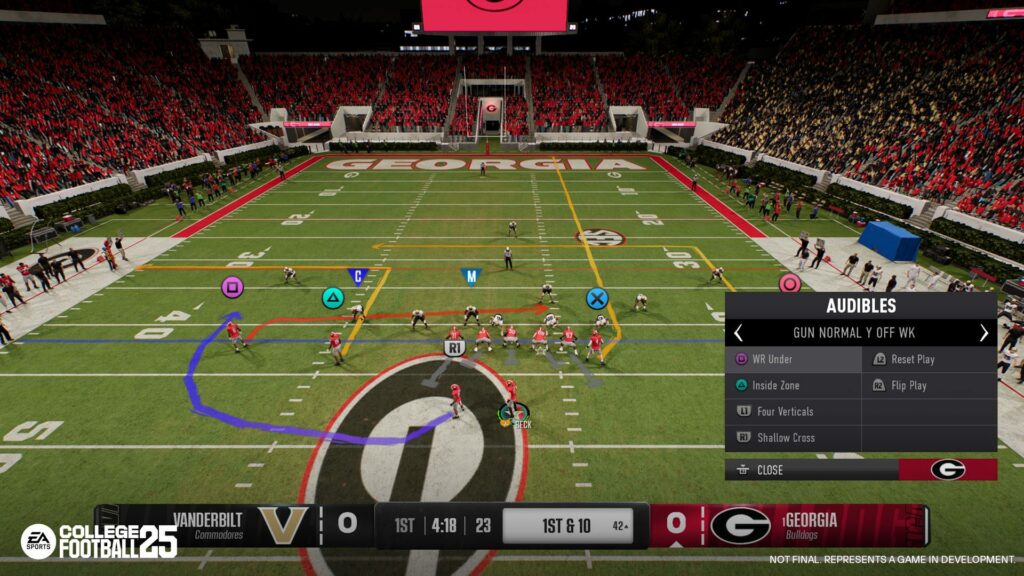The evolution of football strategy has led to a significant shift in offensive playbooks, particularly in college football. With the increasing importance of speed and agility, the spread offense has become a staple for many teams. This style of play focuses on spreading the field and creating mismatches against the defense, allowing for greater opportunities to score. In NCAA 25, the best spread offensive playbook gives coaches and players the tools they need to excel on the field, maximizing their offensive potential and increasing their chances of victory.
Understanding the dynamics of the best spread offensive playbook in NCAA 25 is crucial for anyone involved in coaching or playing. It not only provides a roadmap for offensive strategies but also emphasizes the importance of player roles and responsibilities. By effectively implementing the principles of the spread offense, teams can leverage their strengths, exploit defensive weaknesses, and create an exciting brand of football that captivates fans and players alike.
In this article, we will delve deep into the best spread offensive playbook in NCAA 25, exploring its key components, strategies, and why it is a game-changer for college football. Whether you're a seasoned coach, an aspiring player, or a passionate fan, understanding the nuances of this playbook will enhance your appreciation of the game and potentially elevate your team’s performance.
What is the Best Spread Offensive Playbook in NCAA 25?
The best spread offensive playbook in NCAA 25 is designed to take advantage of the speed and athleticism of players while creating mismatches against defenses. It typically incorporates a variety of formations and plays that allow for quick passes, runs to the outside, and the ability to stretch the field. Teams utilizing this playbook often prioritize quick decision-making and precision execution, allowing them to capitalize on defensive errors.
Key Features of the Best Spread Offensive Playbook
Several key features make the best spread offensive playbook in NCAA 25 stand out:
- Fast-Paced Offense: The playbook promotes a no-huddle offense, allowing teams to keep defenses off balance.
- Multiple Formations: Flexibility in formations helps to confuse defenses and create mismatches.
- Emphasis on Speed: Tailoring plays to fast skill position players maximizes offensive potential.
- Quarterback Mobility: Plays that allow the quarterback to make quick decisions and scramble when necessary.
How Does the Best Spread Offensive Playbook Enhance Team Performance?
The best spread offensive playbook in NCAA 25 enhances team performance in several ways. By creating space on the field, it allows for better running lanes and passing options. This approach keeps defenses guessing, as they must cover more ground and account for multiple receiving threats. Additionally, the high-tempo nature of the offense can wear down opposing defenses, leading to mistakes and big plays.
What Are the Common Plays in the Best Spread Offensive Playbook?
In order to effectively execute the best spread offensive playbook in NCAA 25, teams often rely on a combination of core plays. Here are some common plays included in the playbook:
- Bubble Screens: Quick passes to receivers behind the line of scrimmage that take advantage of defensive over-commitment.
- Zone Read: A run play that allows the quarterback to make a decision based on defensive alignment.
- Four Verticals: A deep passing play that sends all four receivers downfield to stretch the defense.
- Jet Sweep: A play that utilizes speed and motion to get the ball to the edge quickly.
Why is the Spread Offense So Popular in NCAA Football?
The spread offense has gained immense popularity in NCAA football due to its effectiveness in maximizing offensive production. Coaches appreciate its adaptability and ability to exploit mismatches, while players enjoy the fast-paced and exciting nature of the game. Additionally, as high school football programs increasingly adopt the spread style, college teams are finding it easier to recruit players who fit this mold, further amplifying its prevalence.
How Can Coaches Implement the Best Spread Offensive Playbook?
For coaches looking to implement the best spread offensive playbook in NCAA 25, it is essential to focus on a few key areas:
- Player Development: Ensure players are trained in the fundamentals of the spread offense, emphasizing speed and agility.
- Game Planning: Tailor game plans to take advantage of opponent weaknesses while maintaining flexibility.
- Practice Execution: Run effective practices that simulate game situations to improve decision-making and timing.
- Film Study: Use film analysis to review plays and refine strategies based on real-game scenarios.
What Are the Challenges of Using the Spread Offense?
While the spread offense can be highly effective, it is not without its challenges. Teams may struggle with execution if players do not fully understand their roles or if they lack the necessary speed and athleticism. Additionally, defenses that can effectively counter the spread, such as those that employ a strong pass rush or aggressive blitzing schemes, can create problems for offensive units. Coaches must be prepared to adapt and make in-game adjustments to overcome these challenges.
Conclusion: Embracing the Best Spread Offensive Playbook in NCAA 25
In conclusion, the best spread offensive playbook in NCAA 25 is a powerful tool for teams aiming to maximize their offensive capabilities. By understanding its key features, common plays, and implementation strategies, coaches and players can harness its potential to achieve success on the field. As the game of football continues to evolve, embracing innovative approaches like the spread offense will be essential for teams looking to stay competitive in the ever-changing landscape of NCAA football.
Exploring The Iconic Cast Of The Sand Pebbles
Unraveling The Life Of Ammy Virk's Wife, Neeti
Unveiling The Legacy: Arthur Kardashian's Parents


